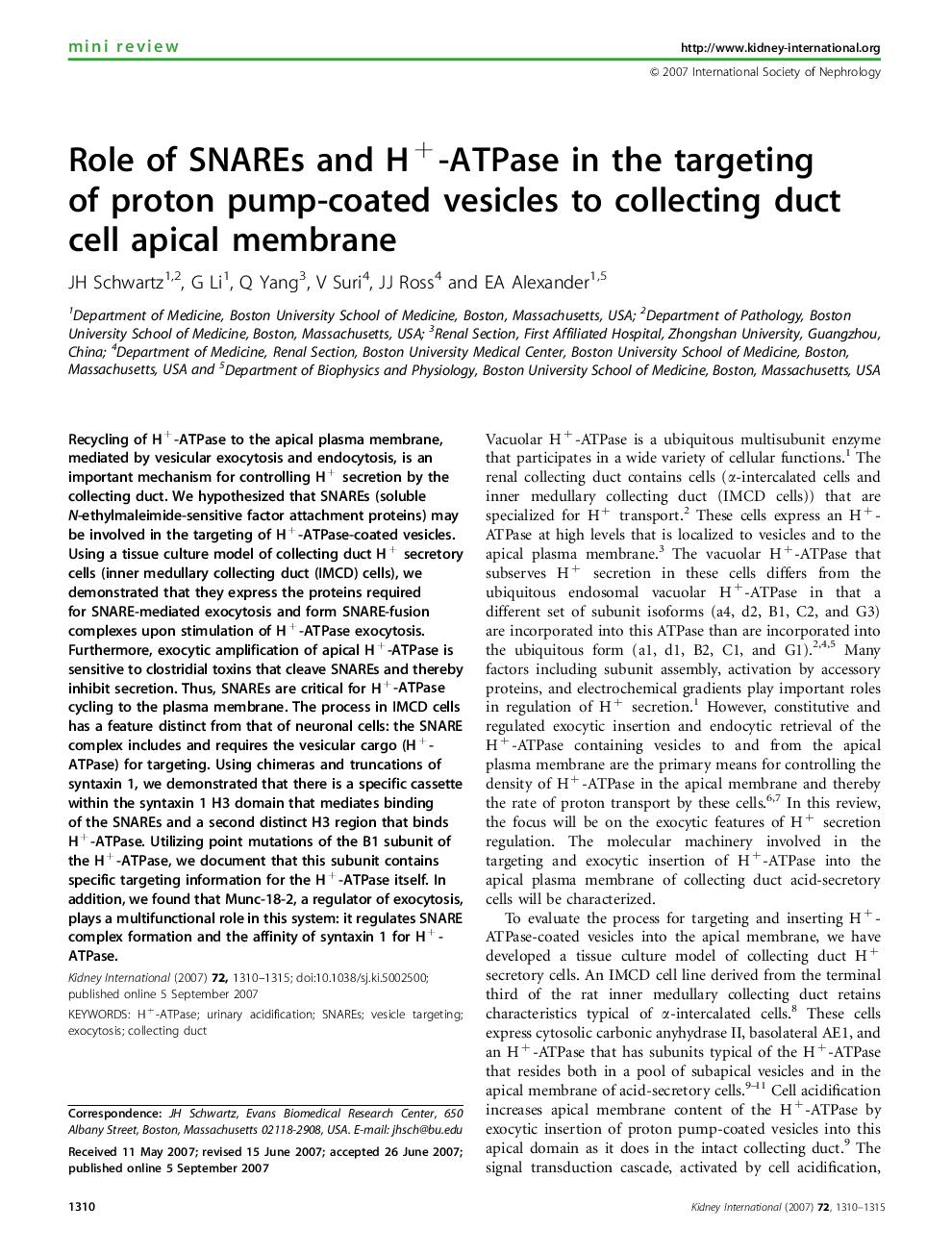| Article ID | Journal | Published Year | Pages | File Type |
|---|---|---|---|---|
| 3886049 | Kidney International | 2007 | 6 Pages |
Recycling of H+-ATPase to the apical plasma membrane, mediated by vesicular exocytosis and endocytosis, is an important mechanism for controlling H+ secretion by the collecting duct. We hypothesized that SNAREs (soluble N-ethylmaleimide-sensitive factor attachment proteins) may be involved in the targeting of H+-ATPase-coated vesicles. Using a tissue culture model of collecting duct H+ secretory cells (inner medullary collecting duct (IMCD) cells), we demonstrated that they express the proteins required for SNARE-mediated exocytosis and form SNARE-fusion complexes upon stimulation of H+-ATPase exocytosis. Furthermore, exocytic amplification of apical H+-ATPase is sensitive to clostridial toxins that cleave SNAREs and thereby inhibit secretion. Thus, SNAREs are critical for H+-ATPase cycling to the plasma membrane. The process in IMCD cells has a feature distinct from that of neuronal cells: the SNARE complex includes and requires the vesicular cargo (H+-ATPase) for targeting. Using chimeras and truncations of syntaxin 1, we demonstrated that there is a specific cassette within the syntaxin 1 H3 domain that mediates binding of the SNAREs and a second distinct H3 region that binds H+-ATPase. Utilizing point mutations of the B1 subunit of the H+-ATPase, we document that this subunit contains specific targeting information for the H+-ATPase itself. In addition, we found that Munc-18-2, a regulator of exocytosis, plays a multifunctional role in this system: it regulates SNARE complex formation and the affinity of syntaxin 1 for H+-ATPase.
